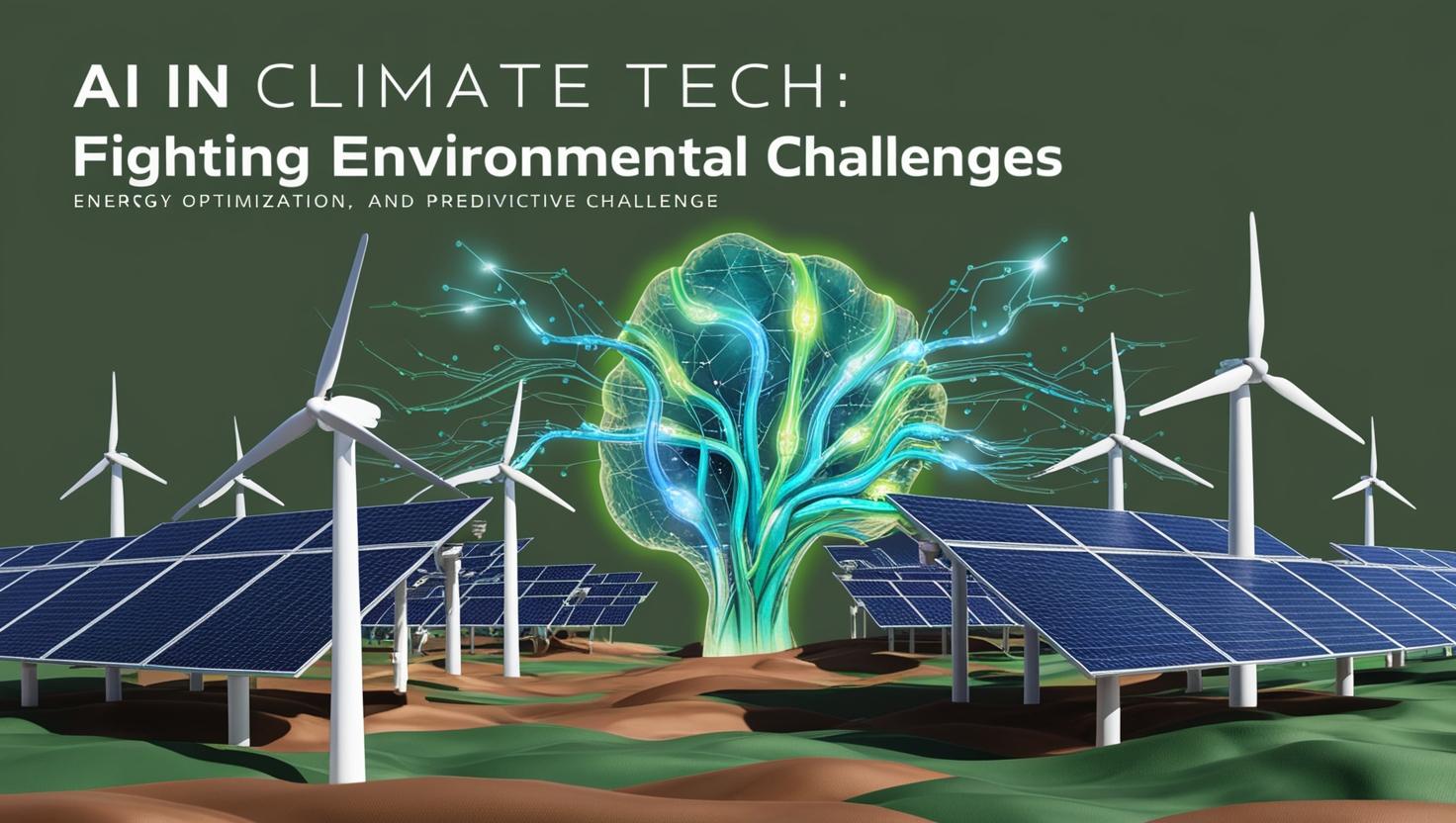Introduction
The climate crisis demands urgent, scalable solutions. As traditional methods struggle to keep pace, AI in Climate Tech emerges as a transformative force, offering data-driven strategies to mitigate environmental degradation. From optimizing energy grids to predicting extreme weather, AI is reshaping how we tackle climate change. This article explores groundbreaking applications, real-world examples, and the challenges ahead in leveraging AI for a sustainable future.
AI in Climate Tech: Revolutionizing Energy Optimization
Smart Grids and Renewable Integration
AI algorithms are critical in balancing energy supply and demand. For instance, Google’s DeepMind reduced energy consumption in data centers by 40% using AI-driven cooling systems. Similarly, startups like AutoGrid employ machine learning to integrate renewable energy sources into grids, minimizing reliance on fossil fuels. According to a PwC report, AI could slash global greenhouse gas emissions by 4% by 2030 through energy efficiency alone.
Industrial and Building Efficiency
Companies like Siemens use AI to optimize manufacturing processes, cutting energy waste by up to 20%. Smart buildings equipped with AI sensors, such as those developed by BrainBox AI, dynamically adjust heating and cooling, reducing emissions by 20–40%.
Predictive Modeling: AI in Climate Risk Forecasting
Climate Science and Disaster Response
AI enhances climate models by analyzing vast datasets. NASA’s Earth Observing System leverages AI to predict ice melt and sea-level rise, while IBM’s PAIRS platform forecasts wildfires with 90% accuracy. During California’s 2023 wildfires, AI tools helped allocate firefighting resources 50% faster.
Agricultural Resilience
AI-powered platforms like Microsoft’s FarmBeats provide farmers with hyperlocal weather predictions, reducing water use by 30% and crop losses by 20%. Such innovations are vital as climate change threatens global food security.
AI-Driven Carbon Capture and Sequestration
Optimizing Direct Air Capture
Startups like Climeworks use AI to improve the efficiency of direct air capture (DAC) systems, lowering costs by 35%. Similarly, CarbonCure’s AI injects CO2 into concrete, permanently storing it while boosting material strength.
Monitoring Reforestation Efforts
AI satellites from companies like Pachama track forest growth and carbon stocks, ensuring reforestation projects meet their sequestration targets.
Challenges and Ethical Considerations in AI Climate Solutions
Energy Consumption of AI Systems
Training large AI models can emit over 600,000 pounds of CO2 (MIT Study). Mitigating this requires renewable-powered data centers and efficient algorithms.
Data Accessibility and Bias
AI’s effectiveness hinges on high-quality, diverse data. Initiatives like OpenAI’s ClimateGPT aim to democratize access, but gaps persist in underrepresented regions.
Conclusion
AI in Climate Tech is not a silver bullet, but its potential to accelerate decarbonization is undeniable. By combining innovation with ethical practices—such as green AI training and inclusive data policies—we can harness this technology to build a resilient, sustainable world. Collaboration between governments, tech leaders, and communities will be key to scaling these solutions globally.
Sources:


















